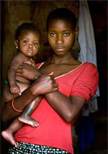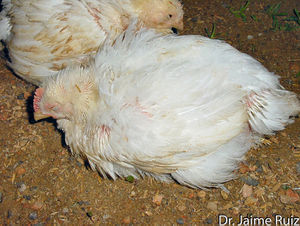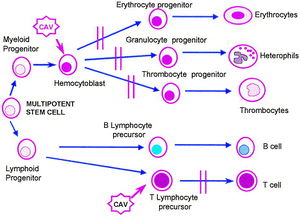HIV+ Pregnant Women and Antiretroviral Treatment: Difference between revisions
No edit summary |
|||
| Line 9: | Line 9: | ||
==Available Antiretroviral Drugs== | ==Available Antiretroviral Drugs== | ||
<br> | <br> | ||
Even more than for other HIV+ patients, antiretroviral regimens for pregnant women must be especially carefully considered. The woman will be on ARV's for the duration of her pregnancy, exposing the vulnerable and developing fetus to a high concentration of drugs for a prolonged period of time. | Even more than for other HIV+ patients, antiretroviral regimens for pregnant women must be especially carefully considered. The woman will be on ARV's for the duration of her pregnancy, exposing the vulnerable and developing fetus to a high concentration of drugs for a prolonged period of time. Drugs considered suitable for HIV+ patients may not be safe for a pregnant women. | ||
==Zidovudine== | ==Zidovudine== | ||
<br> | <br> | ||
Revision as of 18:50, 11 November 2012
A Viral Biorealm page on the family HIV+ Pregnant Women and Antiretroviral Treatment
The human immunodeficiency virus (HIV) has been a global epidemic for over 30 years. Approximately 35 million worldwide are infected with HIV [1]. If untreated, HIV progresses to acquired immunodeficiency syndrome (AIDS), which is almost surely fatal. HIV is transmitted by multiple methods; sexually, via contact with contaminated blood, and from mother to child in utero are the primary methods [2]. Mother to child transmission (MTCT) has been a topic of great research and, by following guidelines, it is now nearly guaranteed that an HIV+ mother can have an HIV- child. In well-resourced countries the rate of MTCT is <1% [3].
There are five main criteria for a successful HIV- pregnancy: 1) antiretroviral therapy for the mother, 2) semen washing if the father is HIV+, 3) alternative insemination, 4) specialized obstetrical care (usually including a caesarian section), and 5) formula feeding. Access to all five of these criteria is what determines a low rate of MTCT. Of these criteria, antiretroviral therapy for the mother is the most effective in reducing MTCT [4].

Available Antiretroviral Drugs
Even more than for other HIV+ patients, antiretroviral regimens for pregnant women must be especially carefully considered. The woman will be on ARV's for the duration of her pregnancy, exposing the vulnerable and developing fetus to a high concentration of drugs for a prolonged period of time. Drugs considered suitable for HIV+ patients may not be safe for a pregnant women.
Zidovudine
Newly Available ARVs
Sociological Differences in Treatment Objectives
Side Effects for the Mother
Side Effects for the Child

The Future of HIV+ Pregnancy Treatment
Virion Structure of Chicken Anemia Virus
Reproductive Cycle of CAV in a Host Cell
Viral Ecology & Pathology

References
[1] Barton-Knott, Sophie. 2011. Nearly 50% of People Who are Eligible for Antiretroviral Therapy Now Have Access to Lifesaving Treatment. UNAIDS press release. http://www.unaids.org/en/resources/presscentre/pressreleaseandstatementarchive/2011/november/20111121wad2011report/.
[2] Centers for Disease Control and Prevention. 2010. HIV Transmission. http://www.cdc.gov/hiv/resources/qa/transmission.htm.
[3] Foster, C., H. Lyall, B, Olmscheid, G. Pearce, S. Zhang and D. Gibb. 2009. Tenofovir Disproxil Fumarate in Pregnancy and Prevention of Mother-to-Child-Transmission of HIV-1: Is it Time to Move on From Zidovudine? HIV Medicine. 10: 397-406.
[4] Giaquinto, C., E. Ruga, D. Rossi, I. Grosch-Worner, J. Mok, I. Jose, I. Bates, F. Hawkins, C. Guevara, J. Pena, J. Garcia, J. Lopez, M. Garcia-Rodriguez, F. Asensi-Botet, M. Otero and D. Perez-Tamarit. 2005. Mother-to-Child-Transmission of HIV Infection in the Era of Highly Active Antiretroviral Therapy. Clinical Infectious Diseases. 40: 458-465.
Page authored by Ellen Gaglione for BIOL 375 Virology, September 2010
